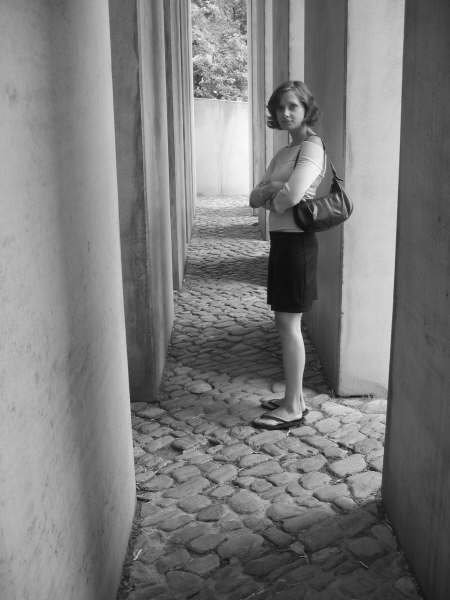In our little world of study, everything has been coming up McCord lately, hasn't it? I wonder if, by the end of term, we'll all develop seemingly odd, indescribeable desires to intern at the Montreal museum. We're reading Brian Young's history of the museum. McCord's network interface encourages users to browse through related artefacts from its collection, and this project came up in discussion on Tuesday. One of the lab exercises from two weeks ago suggests that we create our own tour at the museum by tagging digital images from the McCord's collection. What's more, just this afternoon I received a press release from the museum, forwarded via e-mail from the secretary at Concordia's history department, advertising a "week-end of festivities" for the McCord's 85th birthday. Just an hour ago, thanks to the museum's "Urban Life Through Two Lenses" virtual exhibit, I experienced the most genuine sense of my personal connectedness to the past that I can remember. Professor Turkel has also commented in his blog on this engaging exhibit, and I'll recount my little moment of epiphany after a brief confession of sorts.
I have spent more time thinking about the McCord in my five weeks in London than I ever did in my two years in Montreal. This blog post is inspired by, and devoted to explaining, the fantastic user experiences the museum's online collection, and its "My Folders" artefact tagging mechanism, encourage. Yet my years posing as a Montrealer have, regrettably, made it difficult for me to voice my support for the museum and its work. I had developed a completely unfounded sense that the institution was intolerably old, conservative, dusty and boring. I avoided it entirely. Not once did I darken its door. I'll admit it: I was sure that anything as unabashedly English as the McCord (with its McGill connection and its blatant "museum of Canadian history" banners waving bravely on the lovely rue Sherbrooke) couldn't possibly be cool in downtown Montreal.
As the museum has made its way into both our Public History, and - on two seperate occasions - into our Digital History syllabus, my blind sense of the institution as dusty and backward obviously needs revision.
First, McCord's "My Folders" tool does, as Professor Turkel notes, have important implications for the practice of history. As a user, I can tag digital artefacts from the museum's extensive collection, and make my own online tour. [1] The McCord will save my tour online, and, if I choose, make it available to anyone who wants to view it. This type of interaction with the stuff of the past is very real. It's a far cry from a big red button on a museum console designed to convey the impression of visitor interaction with an exhibit.
Using this tagging tool, I created a folder, and titled it "Lauren's neighborhood." My tour is made up of Notman collection historic photographs of some of the downtown Montreal sites I used to pass on my walk to school. I am free to impose my own meaning on the documents. My tour is still a work in progress, but I can add captions to the photos such as, "I had a really funny encounter at this corner one blustery day," or, "this is where you can usually find the breakdancing busker in the spiderman costume." I can juxtapose my personal stories about the Montreal of 2004-2006 with images of the city taken in the early twentieth century.
Clearly, the McCord's digital applications let their user command historical sources in new, innovative ways. For example, they encourage that user to reflect on the meaning an artifact holds for her. A traditional system wherein the institution merely describes an artifact could never facilitate the same sense of genuine connectedness with the past.
My strongest experience of such a sense came, however, with one segment of the museum's "Urban Life Through Two Lenses" digital exhibit. The concept of the exhibition is a powerful one: it features "duos" of photographs, taken a century apart from each other, yet of the same place in Montreal, from the same angle, and at the same time of day. The second I looked at the "duo" that features the CP Viger hotel and station I felt a chill of excitement and recognition (not to mention a big lump in my throat). I used to live minutes away from this old train station. It dominated the horizon each and every time I walked home. These photographs, understandably, immediately evoked an indescribeably strong sense of home for me. I felt connected to the past in a way that I can't remember experiencing before.
The McCord facilitates visitor interaction with the past in a number of innovative and, in some cases, very personal ways. For this, I'll revoke the "dusty" status that I had unfairly conferred on the institution. I should've known the museum had potential - after all, a 2-day long birthday party isn't bad for an 85 year-old.
-----------------------------------------------------------
1. According to the museum's website, the online database makes available more than 110 000 images of artifacts, and was created in collaboration with 7 other museums.
Wednesday, October 11, 2006
Subscribe to:
Post Comments (Atom)

No comments:
Post a Comment